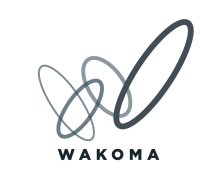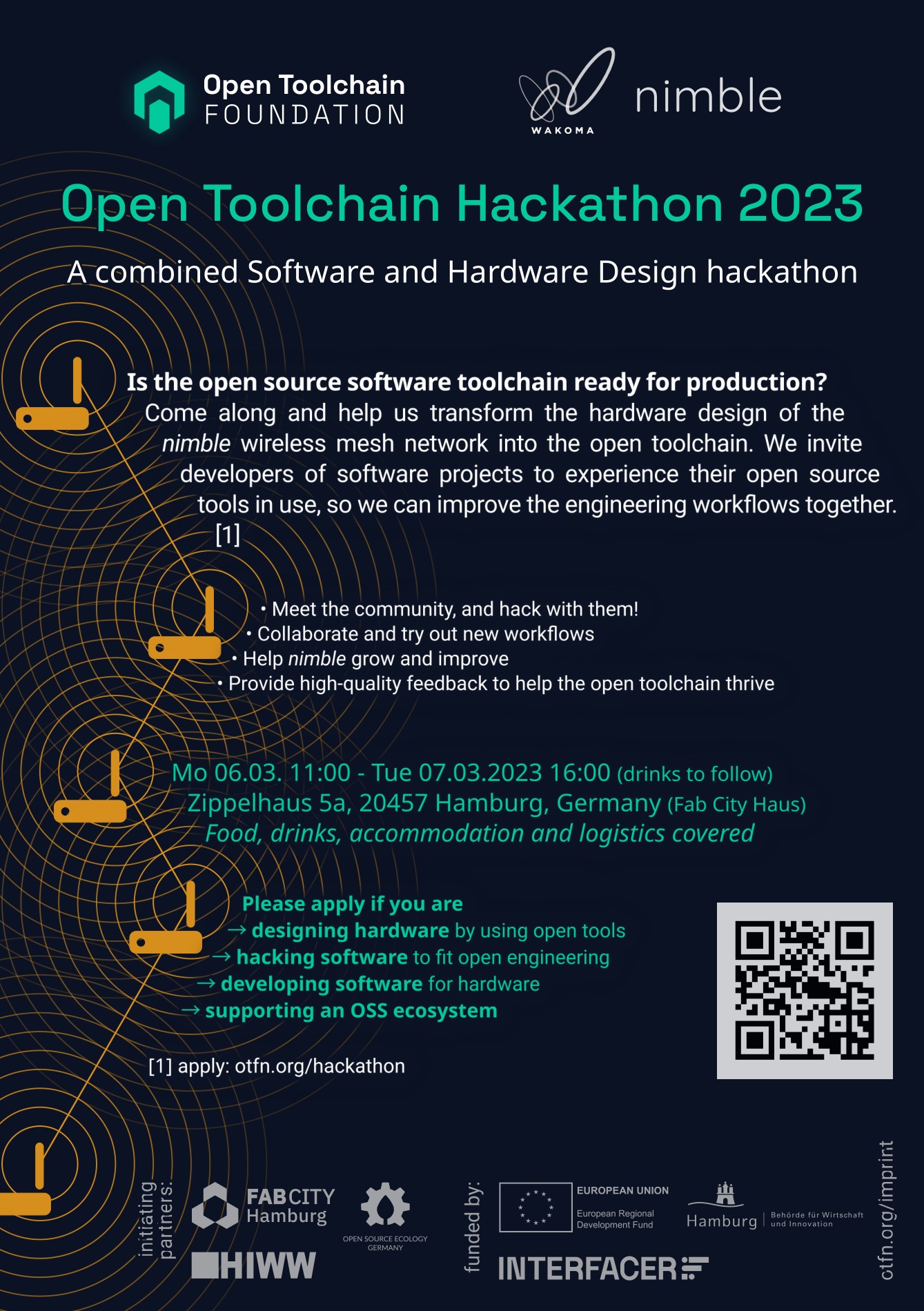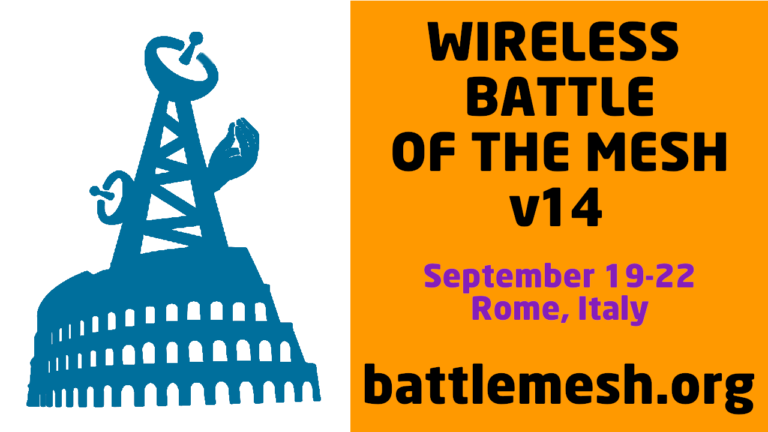A Case for More Nimble Networks
Intro
Over the past few years there has been a sort of Cambrian Explosion of minilabs – scaled down versions of traditional homelabs or data centers. There are Ikea-labs, Lego-labs, LAN-party-labs, tall-labs, cluster-labs, 3D printer-labs, travel-labs, mounted-labs, Pi-labs, labs of labs, wood-labs, rocket-labs, and countless others. They might appear quaint, or even downright adorable, but make no mistake, minilabs are an incredibly powerful force for community resilience.
Attacks on the open web—such as internet shutdowns, censorship, and digital repression—have intensified globally, threatening free expression and access to information. Minilabs – small, self-hosted, and decentralized computing environments – play an increasingly crucial role here, enabling even non-technical users to host their own websites, chat servers, or file-sharing platforms, reducing reliance on centralized services. Deployed within local mesh networks, minilabs enable communication even when the broader internet is shut down. Self-hosted VPNs in minilabs can help users bypass censorship and access blocked content, and local archives of critical websites, datasets, and media can be hosted in labs locally, even if the original content is taken down or blocked. The list goes on and on.
Perhaps the most powerful feature of minilabs is that they foster local technical expertise, enabling everyone from hobbyists and students to seasoned IT professionals to experiment, learn, deploy, and maintain their own services and infrastructure, without the overhead of traditional data centers. This is what we will focus on in the rest of this blogpost.

An 80TB 10in Minilab by: _emerican

A 3D Printed Minilab by: BerkoBob2
Why the minilab boom?
While 19″ racks can still reign supreme in many contexts and can still be considered “mini”, we are generally referring to smaller racks (e.g., 10″, 6″, or even desktop-sized enclosures) which are proving to be increasingly efficient, affordable, and easy to design and deploy.
Minilabs prioritize low-power hardware to minimize electricity costs and heat output, and produce much less noise, making it more practical to have the hardware running 24/7 in the home or office. These factors are especially important in resource-constrained settings, and where spouse or roommate approval is required.
In addition to lower electricity costs, minilab hardware is generally cheaper as well, especially when using refurbished/second-hand equipment, ARM-based devices, or consumer-grade mini-PCs.
To top it off, the small form factor of minilabs means that many, if not most, of the racks/shelves/etc. can be 3D printed. This brings endless opportunities for customziation and localization of existing designs, which we’ll discuss below.

Wooden rack alphaquail10

A travel minilab by: CTAlabrat
The boom hasn’t only been in hardware – the open source-software and self-hosting space has never been so active. Head to https://selfh.st/ and look through the recent newsletters or app directory to see for yourself.
Whether your goal is home media hosting/streaming, private clouds, home automation, or small-scale business infrastructure (e.g., file servers, databases, or development environments), there are countless services under development by and for active and open communities – at a time where these approaches couldn’t be more crucial (see paragraph 1).
Containerization, infrastruture as code, and orchestration are continuously making it easier to deploy, manage, and monitor minilabs, especially as we improve open repositories, tutorials, and documentation for different use cases. Which leads us to….
…The NLnet nimble project…
Roughly 6 years ago we built a small, portable, and open source minilab called the nimble to improve learning and knowledge sharing around building local networks, particularly in places where access to the internet is limited, expensive, and/or censored. Since then, we have worked with several communities around the world to build custom versions of the nimble, and have published research on the process.
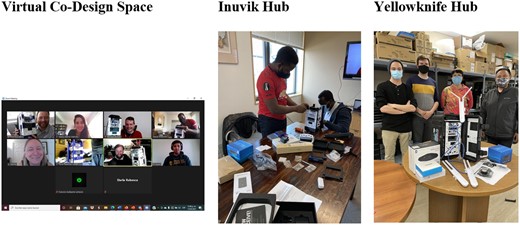
nimble builds Credit
But it was only after the OTFN hackathon that we discovered the true power of the nimble, and minilabs in general.
At the hackathon, attendees were encouraged to self-organize into groups depending on what they wanted to work on, with some people choosing to float between teams to help wherever they were needed. Andreas Kahler had the idea of generating CAD models and documentation in such a way that everything is kept in sync, even when changes are made to the source. The blog post here details the group’s efforts to build a prototype on Andreas’s idea. Long story short, in just a few days the group was able to prove that the concept had promise.
The team pursued the idea of building a web-based system that would allow members of the minilab community to configure a custom nimble and then download all of the CAD files for 3D printing, and the documentation to assemble the rack. That idea became the NLnet nimble project to build that system. Take it for a spin here!
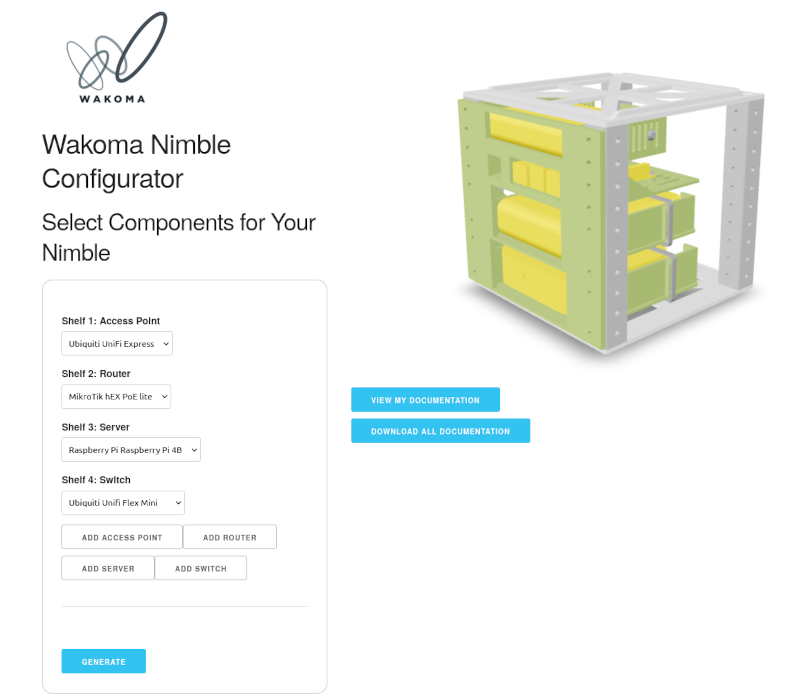
nimble builds Credit
If you are interested in the technical details of how this system was developed, Jeremy Wright has written two blog posts outlining the technical launch of the project and a summary of its completion.
There are multiple other minirack generators, for example this 10″ rack generator, this parametric cage generator, and other open source customizable rack designs. We wholeheartedly support these projects.
Why does this project matter?
Currently at least 2.8 billion people still don’t have meaningful access to the internet. Those who do have access often find that the internet is unaffordable, unreliable, censored, AI-slop filled, and mostly in English.
People building and maintaining their own network infrastructure is often the first step towards cultivating digital skills and creating local content and services, in local languages, relevant to local communities.
This project aims to demystify the construction and localization of open hardware designs by automating the creation of documentation, manufacturing files (STLs), and assembly instructions for any open hardware project. Users define the components, tools, 3D designs, assembly steps, and the desired output formats, such as STL files for 3D printing and exploded-view drawings for instructions.
Since the nimble documentation is generated from plain text files, the assembly guides, bill of materials, troubleshooting/FAQs, and other materials can be easily translated. A document no longer has to be translated “whole cloth” – the source files can be translated and the system assembles the documentation as needed.
While there is still work to do to make this work properly, there is a lot of potential here for open hardware projects – networking related and beyond.

OTFN Hackathon Source
What’s Next
The project team is working on applying CadOrchestrator to other open harwdare projects, and considering ways to enable the nimble builder to generate both 10″ and 6″ racks.
We will be experimenting with ways to build out the harwdare database, using web scraping as a method for ongoing updates of networking component data and potentially local hardware availablity and pricing. Anyone can currently contribute to the hardware database with this form.
We will also be building out additional ‘minilab’ related resources here.
Thanks to….
An enormous thank you to the following folks who have contributed tirelessly to this project.
- Julian Stirling – Project management, GitBuilding expertise and Jack of all trades.
- Antonio de Jesus Anaya Hernandez – DevOps (Developer operations) Engineer
- Amudhan Manivasagam – DevOps (Developer operations) and database development.
- Andreas Kahler – CAD model development.
- Jeremy Wright – CAD assembly development, CAD rendering and annotation.
- Eric Nitschke – Project management, database development and community interface.
And very special thanks to the NLnet team who have provided generous support and funding for this project.
The Open Hardware Manuals project was funded through NGI Zero Core, a fund established by NLnet with financial support from the European Commission’s Next Generation Internet program. Learn more at the NLnet project page.


And finally, thank you to Jeremy Wright for review of and contributions to this post.
A Case for More Nimble Networks Read More »
